Hello all,
I have been collecting costume images for a long time, and today I would like to show some of the images which I have from eastern Boikoland. I do not have enough material to do an in depth analysis, but I will share what I have. The area covered by this article will be the Perehinsk and Bolekhiw regions in the northeast of Boikiwshchyna. I recommend consulting google maps as you read.
Yasen' village.
This village is found in the southeast of this region, to the south and upstream from Perehinske. There are a few old photographs from this village. The image at the head of the article was taken there. The most obvious unique feature of the costume of this village is the long sheepskin vest. It reaches to mid thigh, which is typical of such vests in Bukovyna, but not elsewhere in this vicinity. In keeping with the Boikos' love of restrained ornament, it has large blunt teeth appliqued to the edge of the front opening, and wide sheepskin lapels. The lapels are often pieced together from naturally white and black sheepskins, forming wide stripes. Here are a few more images from this village.
This is a short distance north and downstream. Kul'chyts'ka made a few drawings in this region, some of which were likely made in Yasen'. Others were in Perehinske itself or some of the other villages to the north. These first two pages show sketches from Yasen', with details of the headdress.
The last page, and part of the middle one, show a different costume which was centered on Perehinske and surrounding villages, as far west as Ilemna. Here is a photograph of that costume.
What is distinctive about this costume is firstly the finely pleated front of the shirt, and also the wide, flared, embroidered, turned back cuffs. The drawing also shows an ornament made of ribbon which hangs from the neck, This is common in the region, and also in some of the villages near Bolekhiw. Gerdany are commonly worn over it. Here are a few more photos from this region. Note that the shirt is sometimes not embroidered. Note also that the extent of embroidery on the mens' and boys' shirts varies quite a bit.
Here are some embroidery designs which are supposed to be from this area.
Tsineva village
North of Perehinske, the bunda looked quite different, being made of white wool or sheepskin with floral embroidery. These images I can affirm to be from Tsineva.
These images are from this region, but their precise origin is not specified.
Moving to the west, here are a couple images from the village of Luha.
This is a zapaska from the village of Sukhodil', just south of Luha.
Ilemna
This village is just a bit further west, and comes near to the Bolekhiw region, but the shirt she is wearing here is clearly of the Perehinske type.
Stepping over to the next river valley to the west, the Bolekhiw region. Besides the outfits with chain stitch zigzags and spirals, here are some examples of other local costumes. Some of these show the influence of the modern Halychyna town costume. These images are mostly from Petrechko's book which I cited in the last article. I will be proceeding north, or downstream from near Ilemna.
Lolyn
The older aprons, as elsewhere in Boikoland, Opillia, and Halychyna are of two widths of cloth, and in Boikiwshchyna were embroidered on the hem, and usually at the joining in the center. Here you see that in some photos the joining stitch is visible, and in others, not. Notice the ornamental ribbons hanging in the front of the shirt, as in the Perehinske area.
This outfit shows more modern influence, with free form embroidery on an apron of bought cloth, and embroidery down the sleeves.
Shevchenkove
Here we see diagonal designs. These are Bukovyna style designs, which were spread under the influence of the Halychyna Town Costume.
Pshenychnyky
Some good examples of the old style apron.
Patsykiw
Here we see a very Hutsul style orange design, and floral designs more typical of Opillia.
Stary Mizun'
For this village, I also have some drawings by Kul'chytska.
A wonderful example of an old traditional Boiko costume, showing the restrained ornament.
Here Kul'chytska has captured several of the distinct characteristics of this region: the ornamental ribbon hanging from the neck, double row of embroidery on the hem of the apron without any at the vertical seam, and the white bunda, sheepskin or wool vest.
Novoselytsia
Tserkiwne
Both the vest and the narrow apron show modern influences.
Tiapche
Again, the skirt and narrow apron are from the Halychyna Town Costume.
These last two villages are in the lowlands near Bolekhiw, and are technically just outside Boiko territory, in Opillia.
Pidberezhzhya
Mizhrichchya
Note especially the unusual arrangement of seams and embroidery on the man's shirt. There are more examples of this in the region.
And that is it for today, I hope that this will be of use to people. Certainly the embroidery designs should tempt someone into using them.
Thank you for reading, I hope that you have found this to be interesting and informative.
Roman K
email: rkozakand@aol.com











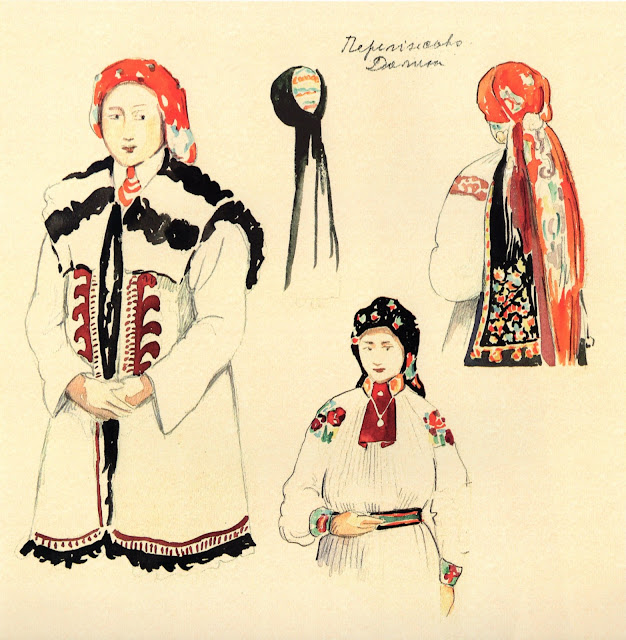









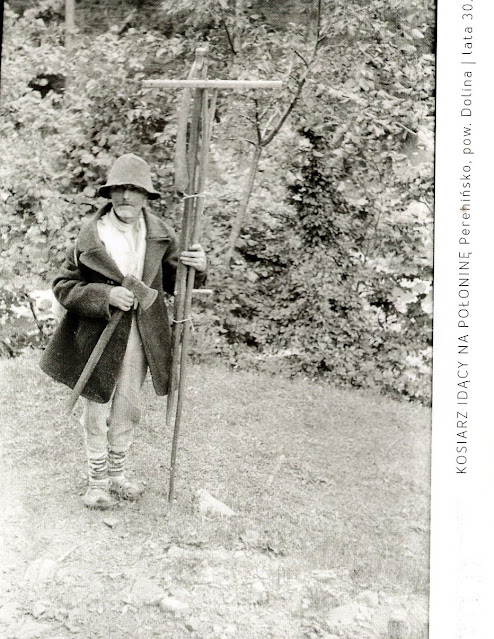




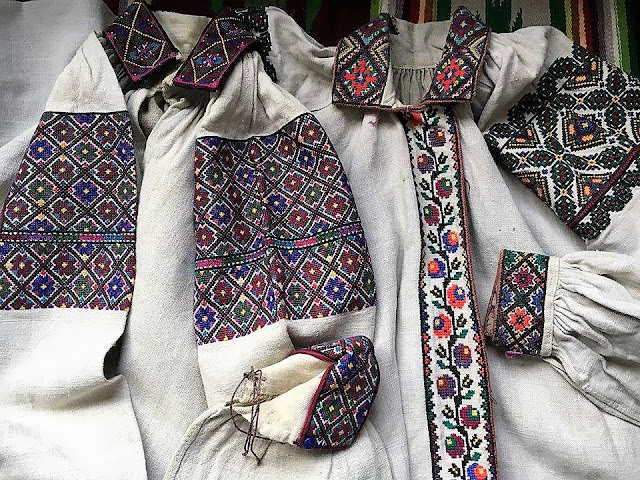












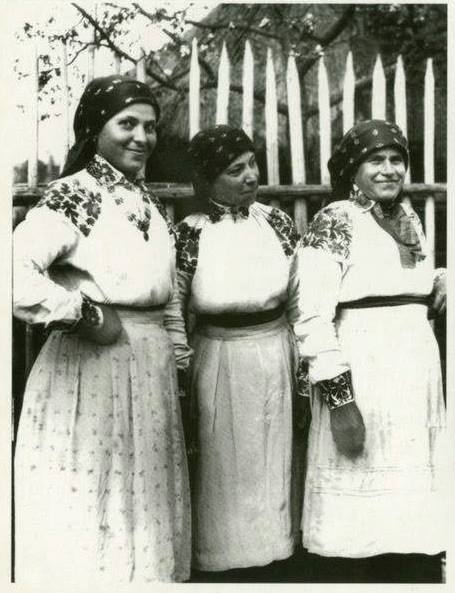





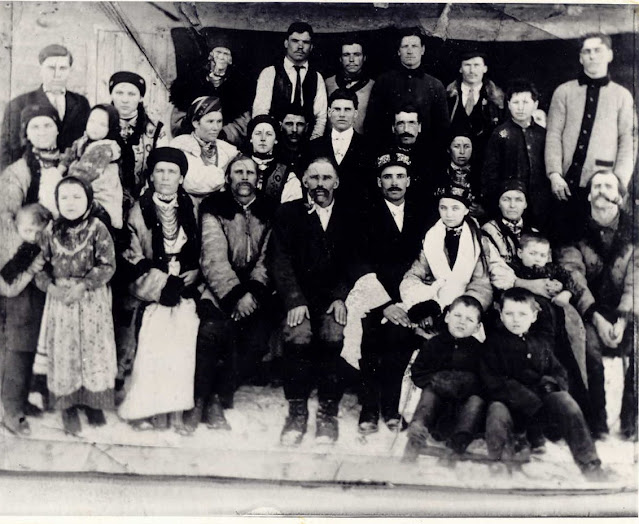





























.jpg)


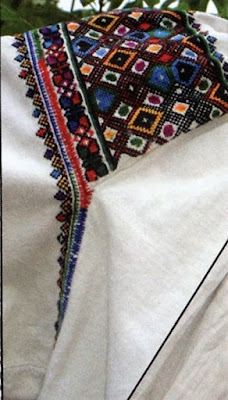

















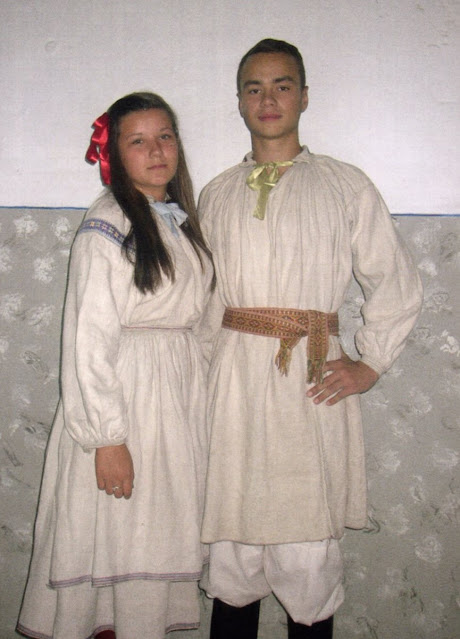



























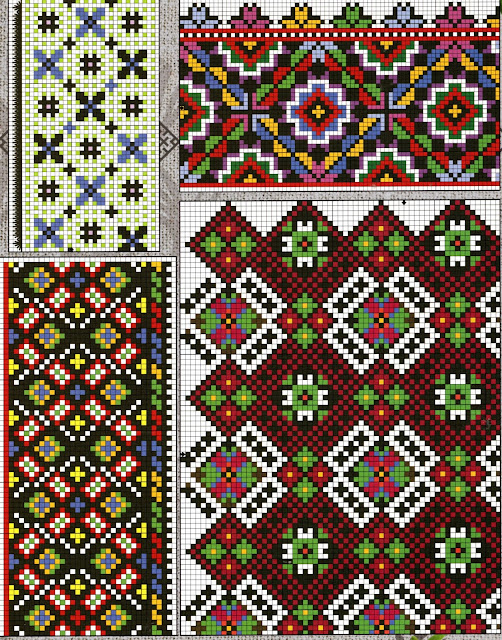







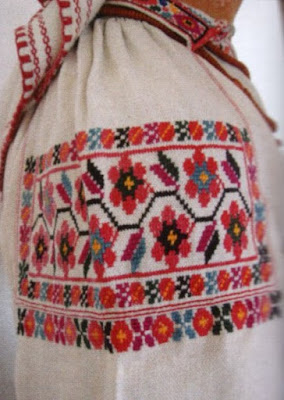





,%20~%201936%20%D1%80..jpg)
,%201934%20%D1%80.jpg)
No comments:
Post a Comment